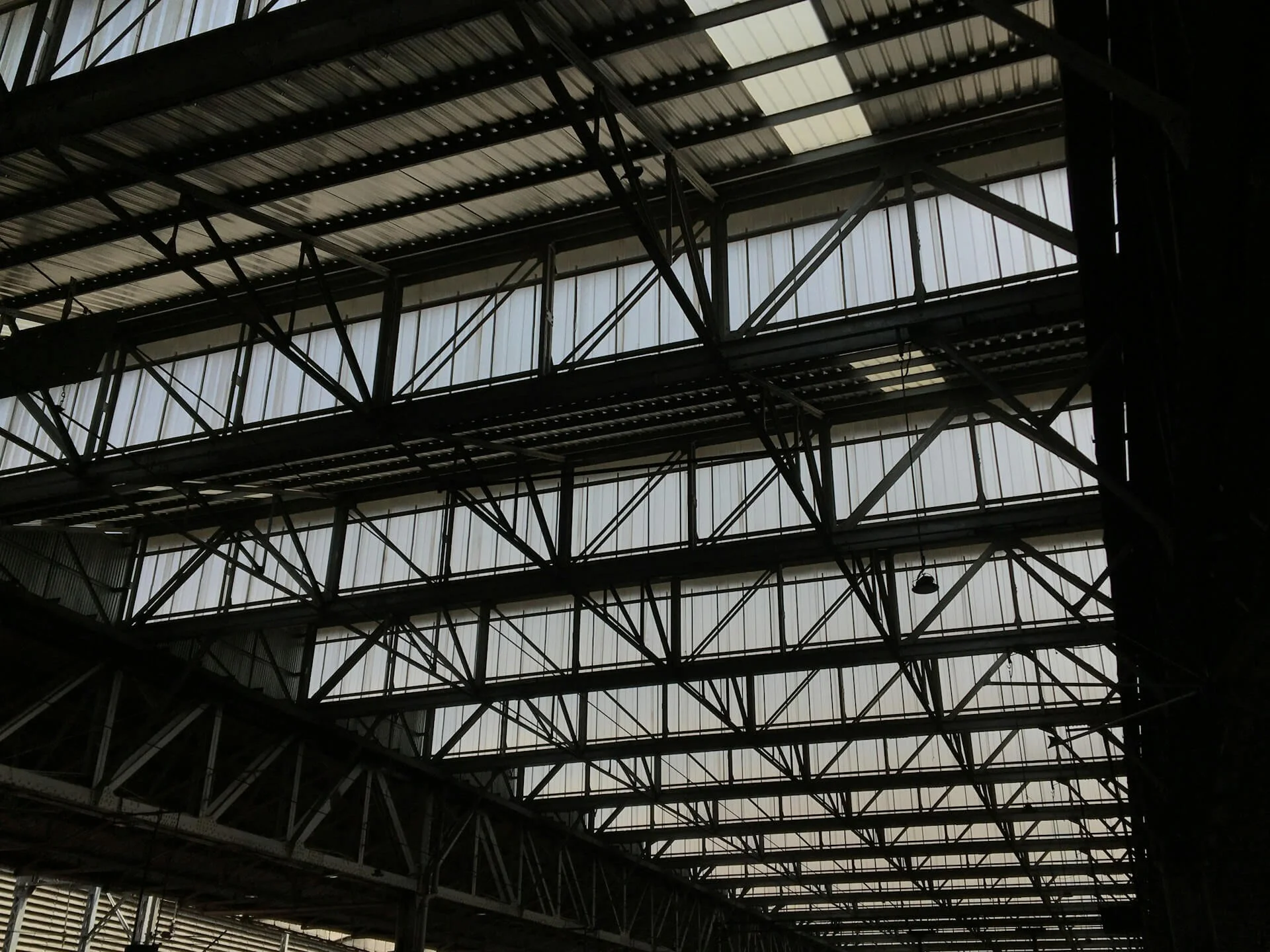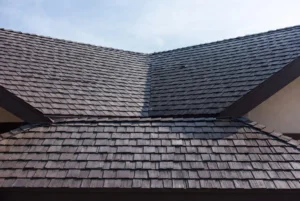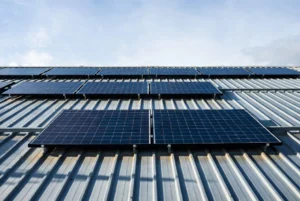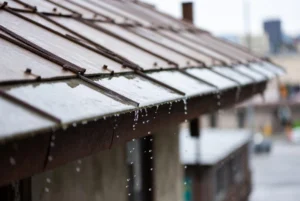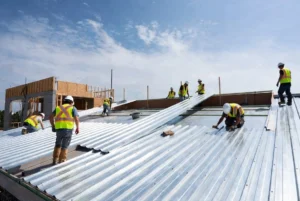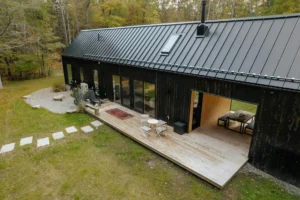I’ve had this conversation probably 200 times in the past five years – homeowners asking me if they should install metal roof battens under their new standing seam metal roof.
The answer? It depends on your specific situation.
Let me break down exactly when battens make sense and when they’re just burning money for no reason.
What Are Metal Roof Battens (In Plain English)?
Metal roof battens are basically strips of wood or metal that create a grid system over your roof deck. Then you attach your metal roofing panels on top of this grid instead of screwing them directly to the deck.
Think of it like building a tiny elevated platform across your entire roof. Usually about 1.5 inches high.
The space underneath allows air to circulate between the metal panels and your roof deck. That’s where all the supposed benefits come from – and also where the debate starts.
When Metal Roof Battens Actually Make Sense
I’m going to be straight with you – most residential roofs don’t need battens. But there are specific situations where they’re worth every penny.
You’re doing a roof-over installation. If you’re putting new metal panels over old asphalt shingles (which we do sometimes to save on tear-off costs), battens create a smooth, level surface. Curled shingles will telegraph through standing seam panels and look terrible. Battens fix that problem instantly.
Your attic has terrible ventilation. Homes built in the 1960s and 70s often have minimal attic ventilation. If you can’t add proper ridge vents or soffit vents, battens create an additional airflow layer that helps prevent condensation issues.
You have an open beam ceiling. When your thermal envelope is at the roof line instead of the attic floor, battens become critical. They provide both thermal break and ventilation that you desperately need.
I installed a standing seam metal roof on a mountain cabin last year with exposed beams inside. The owner insisted we skip battens to save $2,800. We explained the condensation risk. He didn’t listen.
Four months later, water stains appeared on those beautiful beams. We had to remove sections of the roof, install a cross-batten system, and reinstall everything. Total cost to fix it? $8,500.
Don’t be that guy.
The Real Benefits of Metal Roof Battens
Let’s talk about what battens actually do – not the marketing hype, just the facts.
Thermal break. Battens create dead air space between the metal and your roof deck. This reduces heat transfer during summer months. Your attic stays cooler, which means your AC works less.
Ventilation layer. Air flowing under the panels helps release heat and moisture. This is huge for preventing ice dams in winter and reducing cooling costs in summer.
Drainage plane. If water somehow gets under your metal panels (through a failed fastener or damaged seam), battens give it somewhere to go instead of sitting against your underlayment.
Panel protection. With exposed fastener systems like PBR panels, battens mean any water that leaks past a screw head drips onto the underlayment instead of soaking into your deck.
At Rainy Roofers, we recommend cross-battening for maximum performance. Vertical battens go down first, then horizontal battens on top. This creates ventilation channels that allow air to enter at the eaves and exit at the ridge.
Does it cost more? Yes. About 30-40% more than direct-to-deck installation. But in the right situation, it’s worth every dollar.
When You Don’t Need Metal Roof Battens
Here’s where I save you money.
You have good attic insulation and ventilation. If your home has proper R-value insulation and adequate soffit-to-ridge ventilation, you probably don’t need battens. The attic ventilation handles moisture and heat just fine.
You’re installing concealed fastener panels. Standing seam metal roof systems with hidden clips don’t have the same leak risk as exposed fastener panels. The benefit of battens for drainage becomes less important.
Your roof has complex architecture. Homes with dormers, skylights, multiple valleys, and complex intersections become nightmares with battens. Every batten has to be custom-cut around these features. Direct-to-deck installation is cleaner and faster.
You want to avoid raising your roof line. Battens add 1.5 to 2 inches to your roof height. That means rehanging gutters, adjusting flashing around chimneys, and potentially dealing with plumbing stack extensions.
I quoted a job last month where the homeowner wanted battens. Then we measured the skylight clearances. Adding battens would have required replacing three skylights because they wouldn’t seal properly at the new height.
We went direct-to-deck and saved him $4,200.
The Condensation Question Everyone Asks
Let me address the elephant in the room – does skipping metal roof battens cause condensation problems?
Maybe. Here’s the reality.
In cold climates, warm moist air from your living space rises into the attic. If that moisture hits cold metal, it condenses. Battens create an air gap that keeps the metal slightly warmer and allows moisture to escape.
But here’s what most people miss: proper attic ventilation and insulation solve the same problem without battens.
I’ve seen hundreds of direct-to-deck standing seam metal roof installations with zero condensation issues because the homes had:
- Adequate soffit and ridge vents
- Proper vapor barriers
- Sufficient attic insulation
- Sealed penetrations and gaps
In warm humid climates like Florida, the equation changes. Metal cools overnight below the dew point. Warm humid morning air creates condensation on the exterior surface – which is harmless. Adding battens actually creates a second surface underneath where condensation can form.
Unless you have specific ventilation problems, battens might create issues instead of solving them in hot climates.
Metal Roof Battens vs. Direct-to-Deck: Cost Breakdown
Let’s talk real numbers for a typical 2,000 square foot roof.
Direct-to-deck installation:
- Labor: $4,000-$5,500
- Materials (panels, underlayment, trim): $8,000-$11,000
- Total: $12,000-$16,500
Batten installation:
- Battens and fasteners: $1,500-$2,200
- Additional labor: $2,000-$3,000
- Materials (same as above): $8,000-$11,000
- Total: $15,500-$21,200
You’re paying 25-35% more for battens. Sometimes that’s money well spent. Often it’s not.
Standing Seam Metal Roof Considerations
Standing seam panels have their own quirks when it comes to metal roof battens.
Oil canning shows more without battens. When standing seam panels are installed directly over old shingles, you’ll see waviness called oil canning. It’s cosmetic, not structural, but it looks bad. Battens eliminate this completely.
Clip attachment works fine both ways. The concealed clips used with standing seam systems attach equally well to battens or roof decking. Performance is identical either way.
Panel expansion happens regardless. Standing seam panels are designed to expand and contract with temperature changes. Battens don’t affect this – the clips allow movement no matter what’s underneath.
At Rainy Roofers, we install about 60% of our standing seam metal roofs direct-to-deck and 40% with battens. It’s entirely situation-dependent.
Installation Tips for Metal Roof Battens
If you decide battens are right for your project, here’s what matters:
Use the right batten size. Standard is 1×4 or 2×2 wood battens. Metal battens are available but cost more. Space them 24 inches on center for most residential applications.
Install vertical battens first for drainage. Cross-battening means vertical battens go down, then horizontal battens on top. This creates drainage channels and ventilation paths.
Don’t skip the underlayment. Synthetic underlayment goes down before battens. This is your waterproof layer. Never skip it, even with battens.
Attach through to rafters. Battens must be screwed through the deck into rafters or trusses. Screwing just into OSB deck doesn’t provide adequate hold.
Vent the channels. Make sure batten channels have intake at the eaves and exhaust at the ridge. Otherwise you’ve just created dead air space with no benefit.
FAQ About Metal Roof Battens
Do metal roof battens increase energy efficiency?
Yes, when properly ventilated. The air gap created by battens acts as a thermal break, reducing heat transfer into your attic. Expect 5-15% reduction in cooling costs compared to direct-to-deck installation.
Can I install battens myself?
If you’re comfortable with roofing work, yes. But getting the spacing and attachment correct is critical. Mistakes here cause panel alignment issues that are expensive to fix.
Do battens void my metal roof warranty?
Only if they’re not installed per manufacturer specs. Most metal roofing manufacturers allow both batten and direct-to-deck installation. Always check warranty terms before starting.
How long do wood battens last under metal roofing?
Properly installed wood battens protected by underlayment last 40-50 years minimum. They’re not exposed to UV or moisture, so they don’t deteriorate like exterior wood.
Should I use metal or wood battens?
Wood costs less and works perfectly fine. Metal battens don’t rot or warp but cost 2-3 times more. For residential applications, treated wood is the standard choice.
The Bottom Line on Metal Roof Battens
Here’s my honest take after installing metal roofs for over a decade.
Metal roof battens are a solution to specific problems – not a universal requirement.
If you have poor attic ventilation, are doing a roof-over, or have an open beam ceiling, battens are probably worth the extra cost.
If you have good insulation, proper ventilation, and a complex roof design, direct-to-deck installation will save you money without sacrificing performance.
At Rainy Roofers, we evaluate every project individually. We’re not trying to upsell battens when they’re unnecessary, and we won’t skip them when they’re needed.
The key is understanding your specific situation – climate, roof design, existing ventilation, and budget. Make the decision based on those factors, not on generic advice that doesn’t apply to your home.
Want an honest assessment of whether your standing seam metal roof needs battens? We’ll walk your roof, check your attic, and give you straight answers without pushing unnecessary upgrades.

